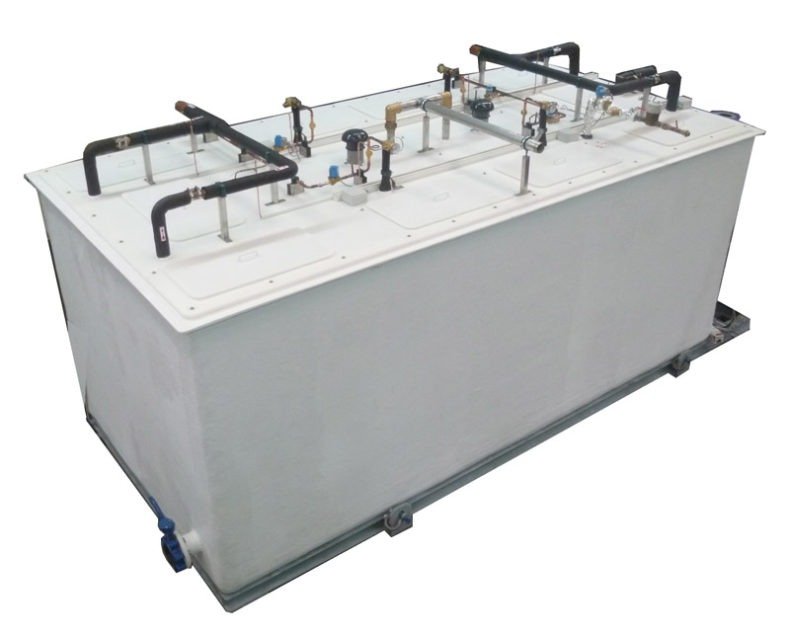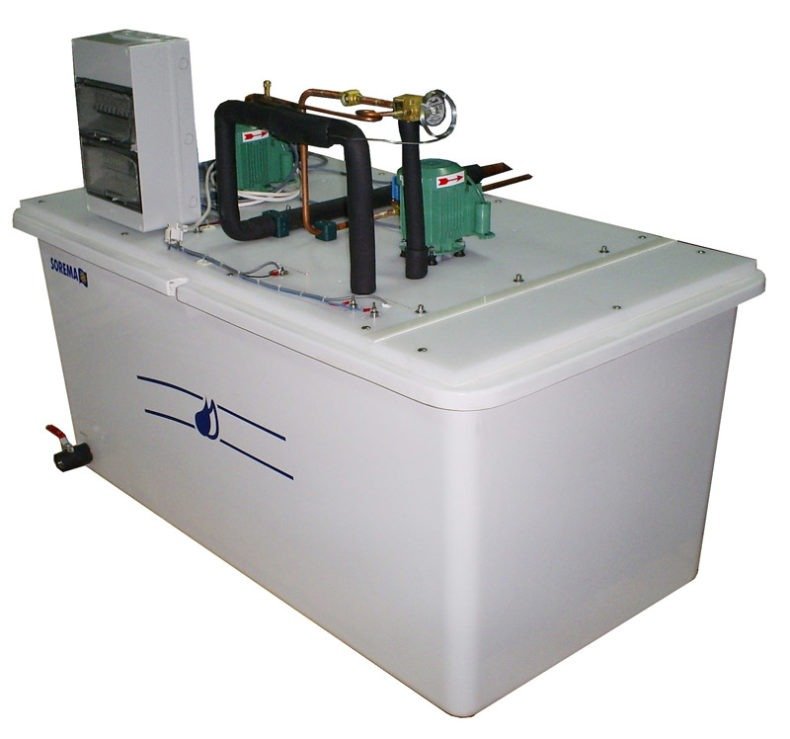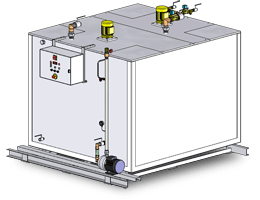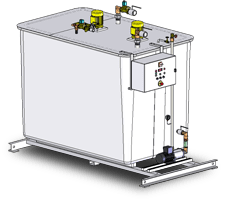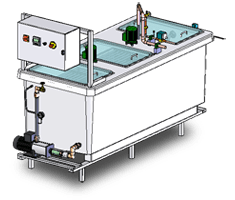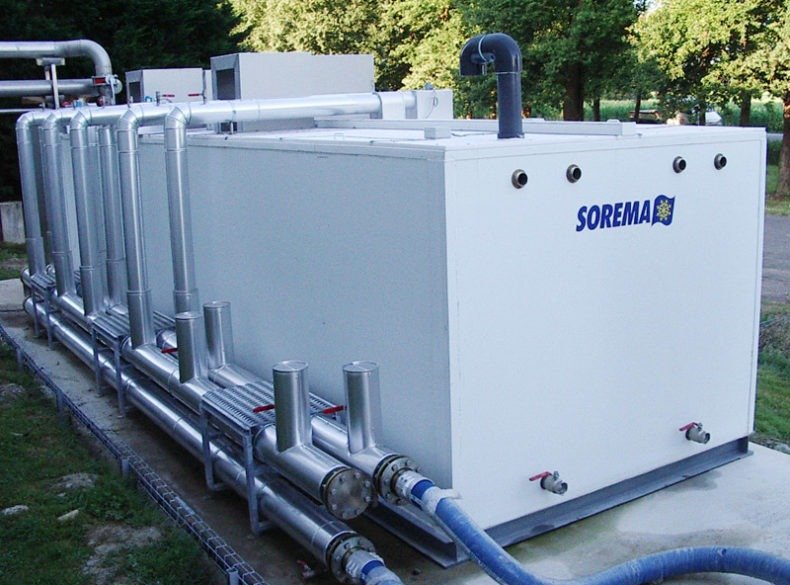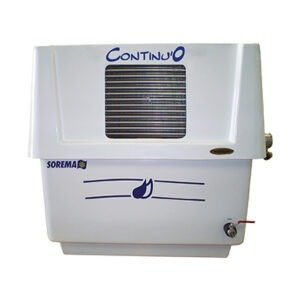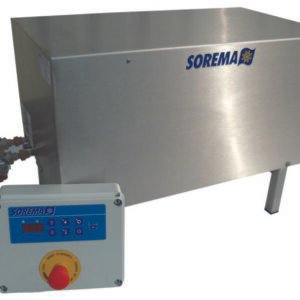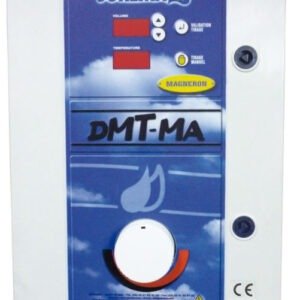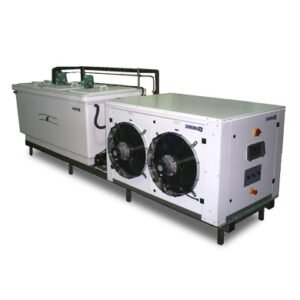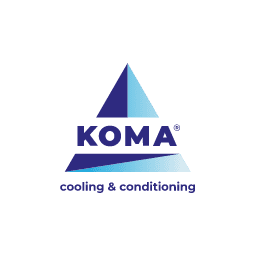Applications
- Cooling of autoclaves, mixers, kettles, and double-jacketed tanks
- Vegetable washing
- Cooling of potable city water for food use
- Cooling of various heat exchangers
Principle
The energy required for process cooling is pre-stored in the form of ice before the temperature drop cycle begins.
- Rapid cooling thanks to the ability of stored ice to absorb a high cooling load at the start of the cycle.
- Flexible operation since ice melts on demand, matching the cooling requirements at different stages of the cycle (high at the start, low at the end).
- Continuous production of +1°C water ensured by forming ice around stainless steel tubes, eliminating the risk of ice buildup inside exchangers—a common cause of total refrigeration unit failure with traditional water coolers.
- Independence from the refrigeration unit, as return water temperature and cooling water flow rate are fully decoupled (accepts high return temperatures).
- Energy optimization: cooling production and storage can be shifted to off-peak hours to lower electricity costs or spread consumption.
- Reduced maintenance costs, approximately half that of conventional water coolers on the market.
Technical Features
- Polyester tank insulated with polyurethane foam
- 316L stainless steel grid-type heat exchanger
- Exchanger with glycol water at –8°C or with refrigerant gas in direct expansion
- Regulation solenoid valve (glycol-water version) or thermostatic expansion valve (direct expansion version)
- Chilled water distribution pump with safety bypass, flow adjustment valve, and pressure gauge
- Agitators
- Drain valve and overflow protection
- Automatic water refill
- Loop return connection point
- Inspection hatches
- Power and control electrical cabinet
- Refrigeration unit available on request
- Optional frost protection for the pump

